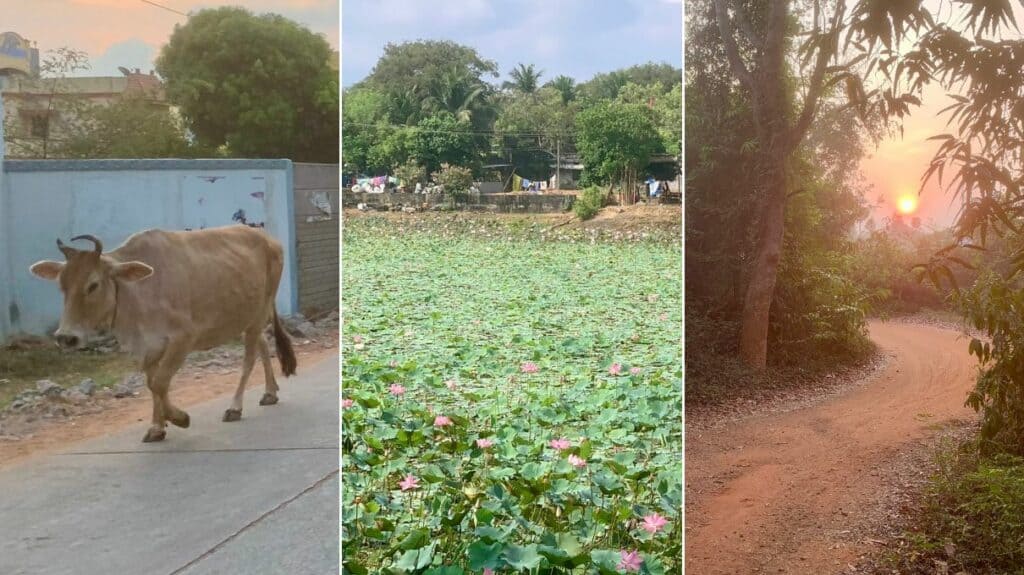We’re near an experimental community designed for people to live by the mantra of Human Unity. No matter your country, religion, skin color, etc., Human Unity tops everything in Auroville in southeastern India.
Auroville is a sprawling community a few kilometers from Puducherry at the Bay of Bengal. It’s a mix of forest, farmland, beach land, villages, homes, stores, paved and dirt roads. My early morning walks in Auroville are peaceful.
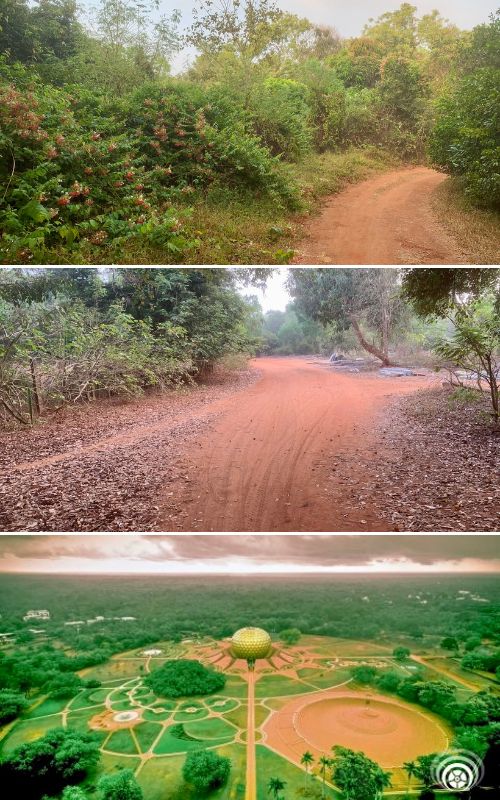
The centerpiece is the Matrimandir (aerial pic above). This is the actual center of Auroville. This is where residents and visitors go to ‘concentrate’ on the Divine, always with Human Unity in mind.
Related: What it’s like to ‘concentrate’ inside Auroville’s Matrimandir
There is no ‘money’ changing hands among residents (though there are ATMs for visitors). It’s almost like a huge commune — an experimental community designed to show us that differences like economics, politics, and religion are petty.
In many ways, Auroville is the type of community the world could use more of.
But my walks inside and outside of Auroville reveal the realities of division in humanity.
What it looks like outside Auroville
There are many beautiful spots in the villages just outside Auroville: fields, lily pad ponds, the coastline, quaint shops and restaurants that line the sides of a two-lane road that is mostly shaded by huge old trees.
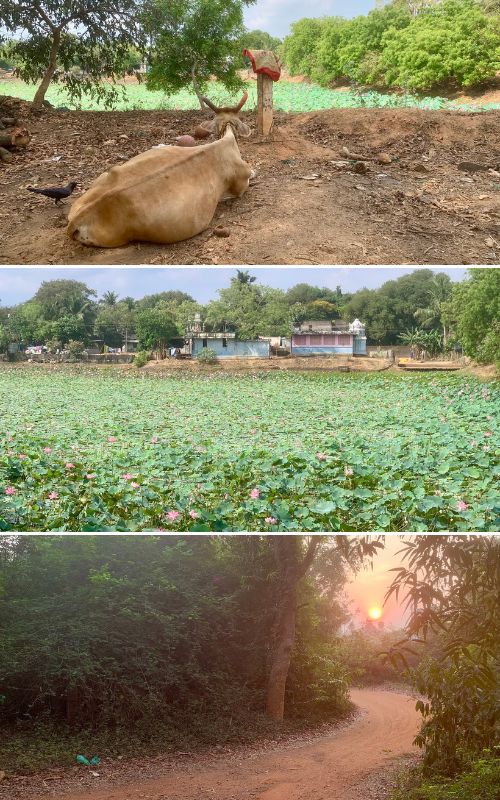
However, poverty and trash are stark problems. People driving to such an idyllic community are assaulted by rotting and burning garbage. If there’s anything good about all the trash lying around, it’s that free-reign cows might score a snack before the rats and crows.
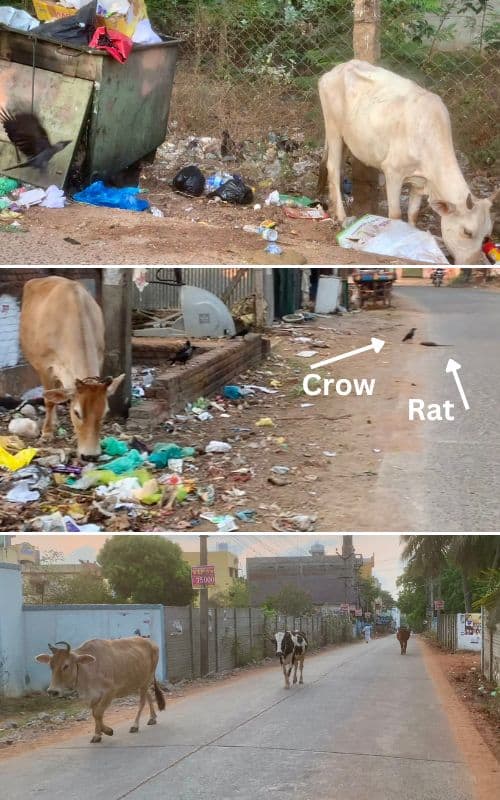
It’s not just the areas around Auroville — all of India has a garbage problem, thanks to the ‘convenience’ of single-use plastic.
To be fair, garbage is an issue all over India – not just here. It’s also a big issue in every other developing nation I’ve ever been to. At least in India, they’re trying to work out something. Large cities like Jaipur have garbage trucks with recorded songs encouraging people to make use of them — for a fee. But put here in the more rural areas, there are no garbage trucks. There are no regional dumps that service poor communities.
One sight really got me. It was a sign by a village school asking people ‘PLEASE DON’T LITTER’, over an area of dumped trash in a burn pit.
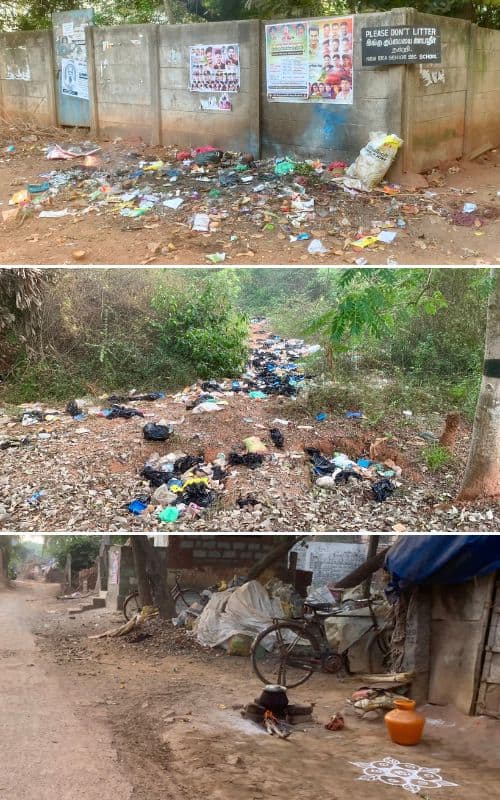
Many people who live inside Auroville use bicycles and electric scooters to ‘save the environment’. People who live outside use them because they can’t afford scooters. These are the people who still cook over wood fires, their modest homes draped with cheap plastic tarps.
Leaching chemicals from plastic isn’t the only problem for people who might think they’ll find purity here in this region. There are organic farms in the region – mostly within Auroville. But nearby those ‘healthy’ plots, there are farms that use pesticides — liberally.
One orchard is within view from the window where we are staying.
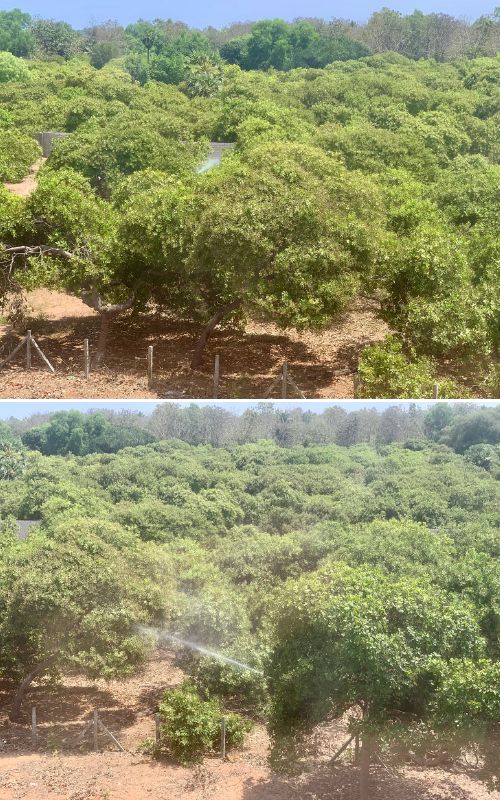
And if none of this bothers you, you can buy a plot of land outside Auroville. Farmland and ‘government approved’ housing lots are advertised all over the main road leading into Auroville proper.
For middle-class Indians, this area is an ideal spot to put down roots — away from the mega-cities and all of those inherent problems.

Auroville and its surroundings are not perfect. But nothing is. Paradise is no place on Earth.
All we can do is observe, enjoy what we can, and then move on. That’s the Earth Vagabonds ethos.
We have slow traveled Earth for many years. Everywhere is the same: convenience and instant gratification for I, me, and mine. It’s more important to Humanity than Unity.

